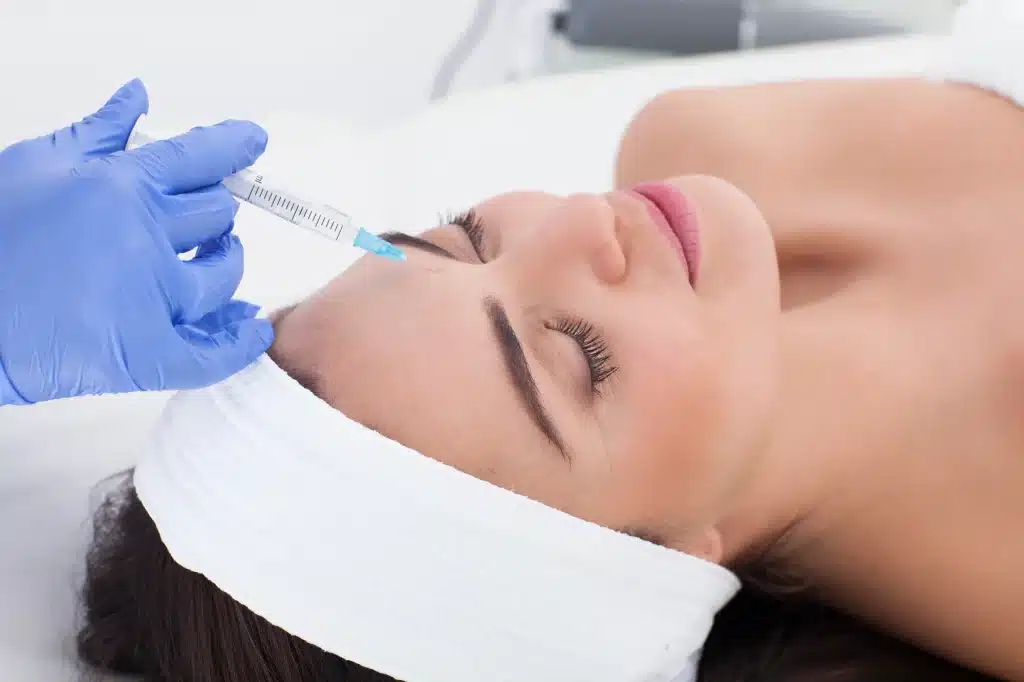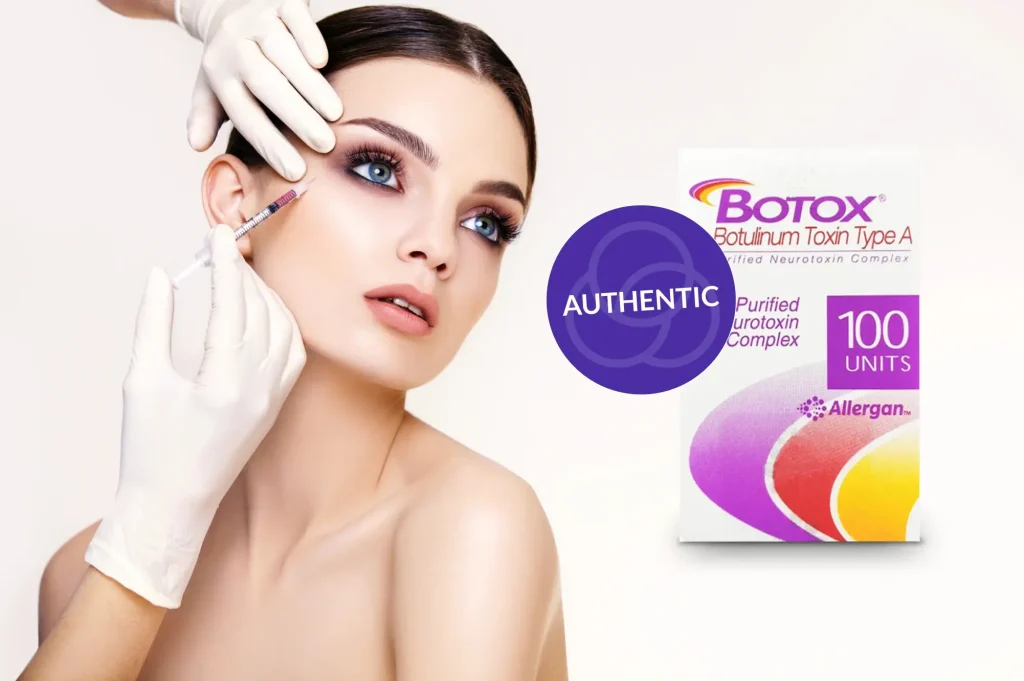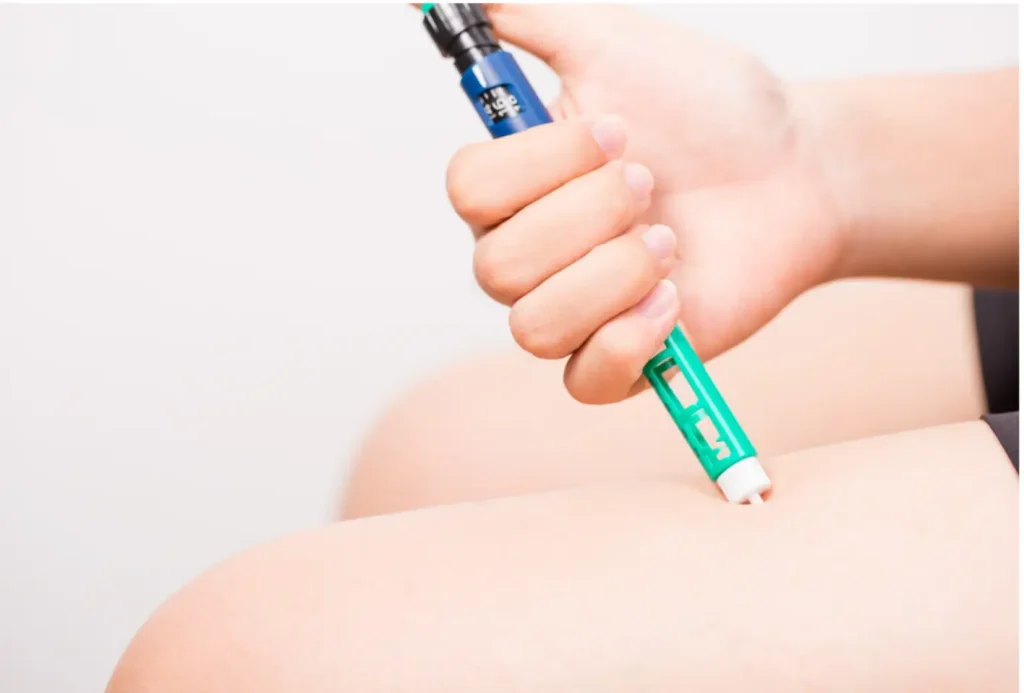Botulinum toxin, derived from the bacterium Clostridium botulinum, has become a cornerstone in both medical and cosmetic treatments. Known for its ability to inhibit neurotransmitter release, botulinum toxin is highly effective in treating a variety of conditions, including dystonia, chronic pain, and muscle spasticity. In the realm of aesthetic medicine, its cosmetic applications—particularly in wrinkle reduction—have surged in popularity, thanks to its precision and temporary, yet impactful results.
Among the several botulinum toxin formulations available, Innotox and Botox are two of the most well-known. While they share a similar function in treating facial wrinkles and other aesthetic concerns, these two products differ in composition, manufacturing processes, and administration techniques.
In this article, we will compare Innotox and Botox, delving into their unique properties, effectiveness, and safety profiles, to help you make an informed decision about which botulinum toxin treatment best aligns with your aesthetic goals.
Key Takeaways
- Innotox and Botox are both effective botulinum toxin treatments for reducing wrinkles and improving aesthetic outcomes, but they differ in key areas such as formulation, cost, and regulatory approval.
- Since Innotox is a ready-to-use liquid, it offers quicker onset (2–3 days) and longer-lasting results (4–6 months) compared to Botox, which is a freeze-dried powder. Botox requires reconstitution and typically takes 4–7 days to show results.
- Innotox does not contain human serum albumin or animal-derived ingredients, making it a vegan-friendly option with a lower risk of allergic reactions. In contrast, Botox includes these components and has decades of clinical data supporting its safety and efficacy.
- Innotox is stable at room temperature, making it easier to handle in clinical settings, while Botox requires freezing before reconstitution and refrigeration afterward.
- Innotox is often more affordable than Botox, especially in markets where it is more popular. However, when making a decision, consider both FDA approval and practitioner familiarity with the product.
- Many practitioners trust Botox, mainly because it has FDA approval. Meanwhile, Innotox has approval in several international markets, but it doesn’t have FDA approval yet in the United States.
- Both treatments have their advantages depending on the patient’s needs, with Innotox offering a more convenient and cost-effective option and Botox providing a long-established, clinically proven alternative.
About: Medical Spa RX provides medical practices with premium products at the best prices. If you’re looking to buy Innotox for your practice, the sales representatives at Medical Spa RX can give you guidance.
Formulation Differences: Innotox Liquid vs Botox Powder
One of the key distinctions between Innotox and Botox lies in their formulations. Botox is a freeze-dried powder that requires dilution with saline before use, which introduces the potential for inconsistencies in concentration if not mixed correctly. In contrast, Innotox comes as a ready-to-use liquid, offering uniform dosing and simplifying handling.

Another difference is in the composition: Innotox is free of human serum albumin and animal-derived ingredients, using a synthetic stabilizer instead. This makes it a vegan-friendly option and potentially reduces the risk of allergic reactions. For patients seeking purely synthetic treatments, Innotox offers an appealing alternative.
Botox, however, contains human serum albumin and sodium chloride, which contribute to its long-established stability profile. Botox has decades of research supporting its effectiveness and safety. Innotox, on the other hand, offers the modern convenience of a liquid formulation that minimizes preparation time and potential errors.
Efficacy, Onset & Duration: Innotox’s Quicker Onset?
Both Innotox and Botox are highly effective at reducing muscle contractions and smoothing wrinkles, but their onset and duration vary. Innotox shows quicker onset with visible results appearing in 2–3 days, compared to Botox, which typically takes 4–7 days for noticeable effects.
In addition to its faster results, Innotox offers a longer-lasting effect, typically lasting 4–6 months, while Botox generally maintains its results for 3–4 months. This extended duration is attributed to Innotox’s stabilized formulation, which helps minimize antibody resistance and enhances neuromuscular binding.
For individuals seeking fast-acting, longer-lasting results, Innotox presents a compelling alternative to Botox. However, treatment must be administered by certified professionals to ensure both efficacy and safety.
Diffusion, Immunogenicity & Safety Profiles for Innotox and Botox
The way in which botulinum toxins spread within tissue is an important factor in determining the overall aesthetic outcome. While both Innotox and Botox are effective, their formulations influence how they diffuse, their immunogenicity, and overall safety profiles. Understanding these differences is essential for both patients and practitioners when making a treatment decision.

Diffusion
Innotox’s liquid formulation may allow for smoother diffusion, resulting in more even results in areas that require precision, such as the forehead.
On the other hand, Botox has a more controlled diffusion radius, which is beneficial for targeted applications in smaller areas.
Immunogenicity
Because Innotox lacks complexing proteins and human serum albumin, it may present a lower risk of antibody formation over time. More extensive clinical studies are necessary to confirm this potential benefit.
Safety Profiles
Botox has a long-standing safety record, supported by decades of clinical use and peer-reviewed studies.
Innotox, while popular in markets such as South Korea, has a more limited volume of published long-term safety data. Innotox is not yet FDA-approved, meaning it has not undergone formal U.S. regulatory assessments.
Storage, Cost & Regulatory Status of Innotox vs Botox
Proper storage is critical to maintaining the efficacy of botulinum toxin treatments. Innotox offers a significant advantage with its room-temperature stability, making it easier to handle in busy clinical settings.
According to the Innotox storage instructions, the product does not require refrigeration, unlike Botox, which must be stored in a freezer before reconstitution and kept cold afterward. This difference in storage requirements simplifies handling for practitioners, particularly in high-volume practices, and reduces the risk of product degradation due to temperature fluctuations.
- Storage: Botox must remain frozen before reconstitution and refrigerated after mixing, which complicates clinical operations. Innotox, on the other hand, remains stable at room temperature, simplifying storage and reducing waste due to its temperature insensitivity.
- Cost: Innotox is generally more affordable than Botox, particularly in markets where it is commonly used. However, you should weigh the price against regulatory considerations and practitioner familiarity with the product.
- Regulatory Status: Botox is FDA-approved and widely used in over 100 countries, with extensive clinical data backing its safety and efficacy. Innotox, although approved in South Korea and several international markets, is not yet approved in the United States. This limits its availability to licensed professionals in regions governed by FDA regulations.
Both products offer effective results, but you should consider differences in storage, pricing, and regulatory approval when selecting the most suitable treatment.
Conclusion
Innotox and Botox are both highly effective for reducing wrinkles and improving facial aesthetics, but they differ in formulation, cost, and regulatory status. Innotox offers the convenience of a pre-mixed liquid with a faster onset and longer-lasting effects, making it an attractive option for patients seeking a quick, convenient treatment. However, it is not yet FDA-approved, which may limit its availability in certain regions.
Botox, with its decades of proven success, remains the gold standard for botulinum toxin treatments. It is FDA-approved and backed by a robust body of clinical research. The choice between Innotox and Botox depends on individual treatment goals, the practitioner’s experience, and the availability of the product in the patient’s region.
FAQs
1. What is Innotox made of?
Innotox contains botulinum toxin type A, but it does not use animal-based ingredients or human serum albumin.
2. Is Innotox FDA-approved?
No. Innotox doesn’t have FDA approval, which may limit its availability in certain regions.
3. How long does Innotox last?
Results typically last 3 to 4 months, similar to other botulinum toxin products like Botox.
4. Is Innotox safe?
When used by licensed professionals, Innotox is generally considered safe, though fewer studies exist compared to Botox.
5. Who manufactures Innotox?
Innotox is produced by Medytox, a South Korean biopharmaceutical company specializing in neurotoxin products.
6. What are the benefits of Innotox over Botox?
Innotox offers faster onset, pre-mixed convenience, and a potentially lower risk of allergic reactions due to synthetic ingredients.
7. Can Innotox be used for medical conditions like Botox?
It is primarily used for cosmetic purposes in countries where it’s approved. Medical applications are still under evaluation in most markets.
References
Ayoub N. Botulinum Toxin Therapy: A Comprehensive Review on Clinical and Pharmacological Insights. Journal of Clinical Medicine. 2025;14(6):2021-2021. doi:https://doi.org/10.3390/jcm14062021
World Health Organization. Botulism. Published September 25, 2023. https://www.who.int/news-room/fact-sheets/detail/botulism/





















